What are the current threats to our forests?
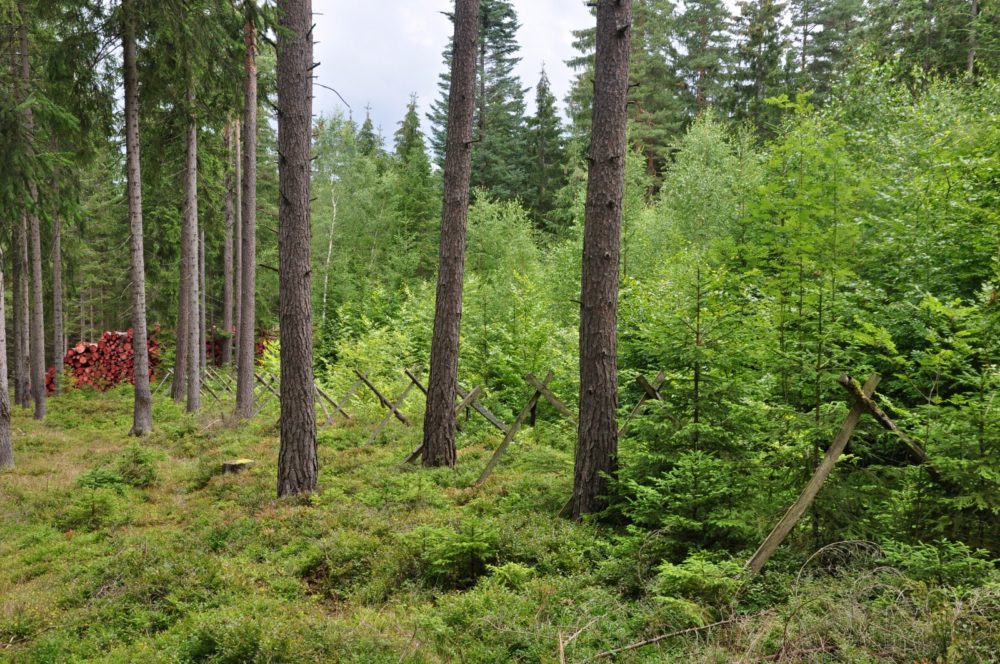 The health of forests varies significantly depending on whether they are “young” or “old” stands. For instance, in spruce forests, stands up to 60 years of age have an average defoliation of only 13%, while those over 120 years old have a defoliation rate of over 37%. Similarly, beech forests up to 60 years old have an average defoliation rate of 11%, while those over 120 years old have double the average defoliation rate. Therefore, it is necessary to distinguish between “old growth forests,” which have developed naturally without human intervention, and monoculture stands over 120 years old, which usually have reduced vitality and present a risk for harmful agents. Commercial forests have been aging significantly in the last century, with forests older than 100 years present on only 3% of arable land in 1920, increasing to more than 20% today.
The health of forests varies significantly depending on whether they are “young” or “old” stands. For instance, in spruce forests, stands up to 60 years of age have an average defoliation of only 13%, while those over 120 years old have a defoliation rate of over 37%. Similarly, beech forests up to 60 years old have an average defoliation rate of 11%, while those over 120 years old have double the average defoliation rate. Therefore, it is necessary to distinguish between “old growth forests,” which have developed naturally without human intervention, and monoculture stands over 120 years old, which usually have reduced vitality and present a risk for harmful agents. Commercial forests have been aging significantly in the last century, with forests older than 100 years present on only 3% of arable land in 1920, increasing to more than 20% today.
The health of forests
The ICP Forests program provides valuable data on the condition of forests. For almost 40 years, this program has assessed the state of forest health across 5,628 areas in 42 European countries. In the Czech Republic, 146 regions are being evaluated as part of the international network, adding to a total of 306 areas to cover the variability within the country. The program evaluates defoliation, which is the loss of leaves or needles in the crowns of trees compared to the “ideal state”.
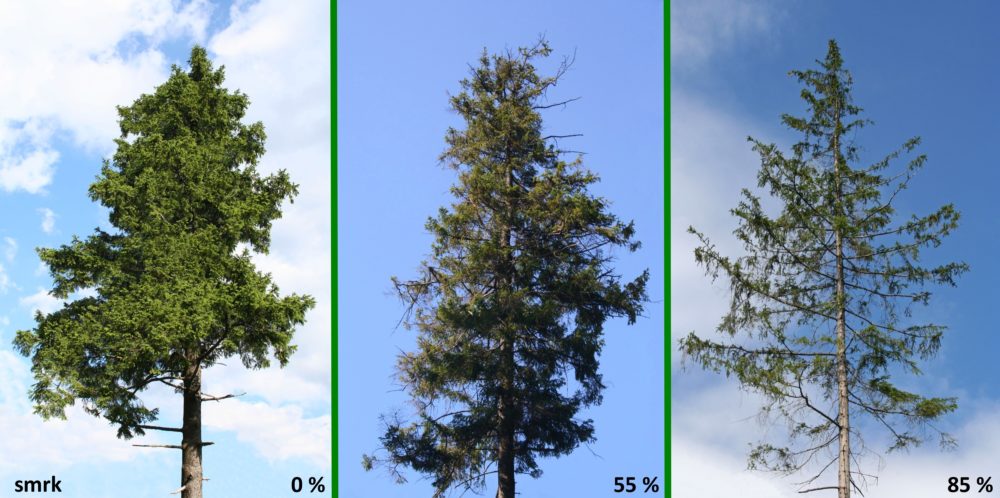 Norway spruce is the most common tree species, covering 46.8% of the stands‘area. The average defoliation values for this species are around 30% in the long term. During the peak of bark blight, the percentage of trees with poor health status (defoliation above 60%) increased to 3-7% between 2016 and 2023. However, it is important to note that the assessment of defoliation cannot capture the course of the bark blight, as cleared areas cannot be evaluated.
Norway spruce is the most common tree species, covering 46.8% of the stands‘area. The average defoliation values for this species are around 30% in the long term. During the peak of bark blight, the percentage of trees with poor health status (defoliation above 60%) increased to 3-7% between 2016 and 2023. However, it is important to note that the assessment of defoliation cannot capture the course of the bark blight, as cleared areas cannot be evaluated.
Scots pine is the second most common tree species in our forests, accounting for 16% of the total population. Unfortunately, since the 1990s, the health condition of this species has been gradually deteriorating. In 2019, the average defoliation rate of Scots pine was almost 50%, making it the tree with the worst health status in our territory. Although there has been a slight reduction in defoliation to 45% by 2023, this is mainly due to harvesting the most damaged stands rather than any significant improvement in vitality.
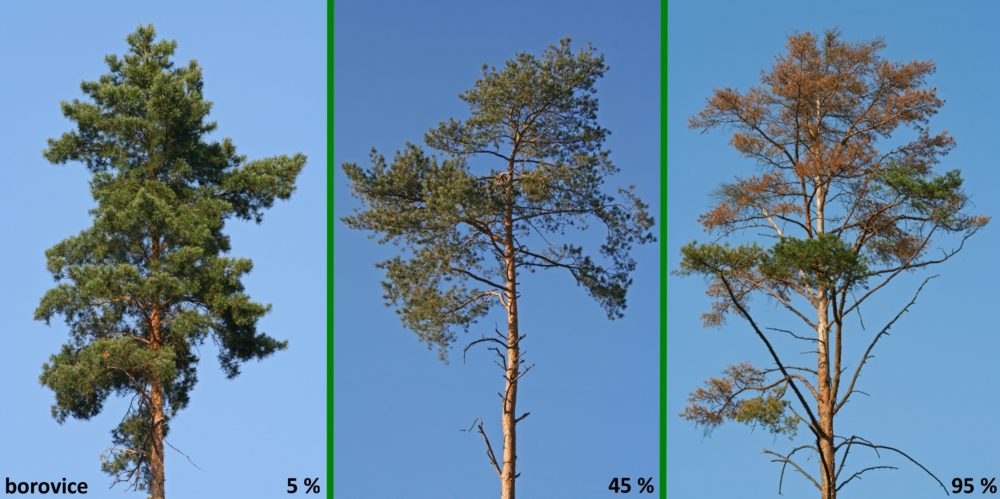 The European beech, which makes up around 10% of our tree species, currently has the healthiest status with an average defoliation of about 15% in the longer time scale.
The European beech, which makes up around 10% of our tree species, currently has the healthiest status with an average defoliation of about 15% in the longer time scale.
However, the average defoliation of the pedunculate and sessile oaks, which together represent 7.8% of our tree species composition, temporarily increased after the dry year of 2018 and is currently hovering around the average value of 30%.
The health of “young” and “old” forest stands is significantly different. For instance, in the case of Norway spruce, stands up to 60 years of age have an average defoliation of only 13%, while stands over 120 years old have a defoliation of more than 37%. This difference is also visible in other tree species. For example, in the case of European beech, stands up to 60 years old have an average defoliation of 11%, while stands over 120 years old have defoliation twice higher.
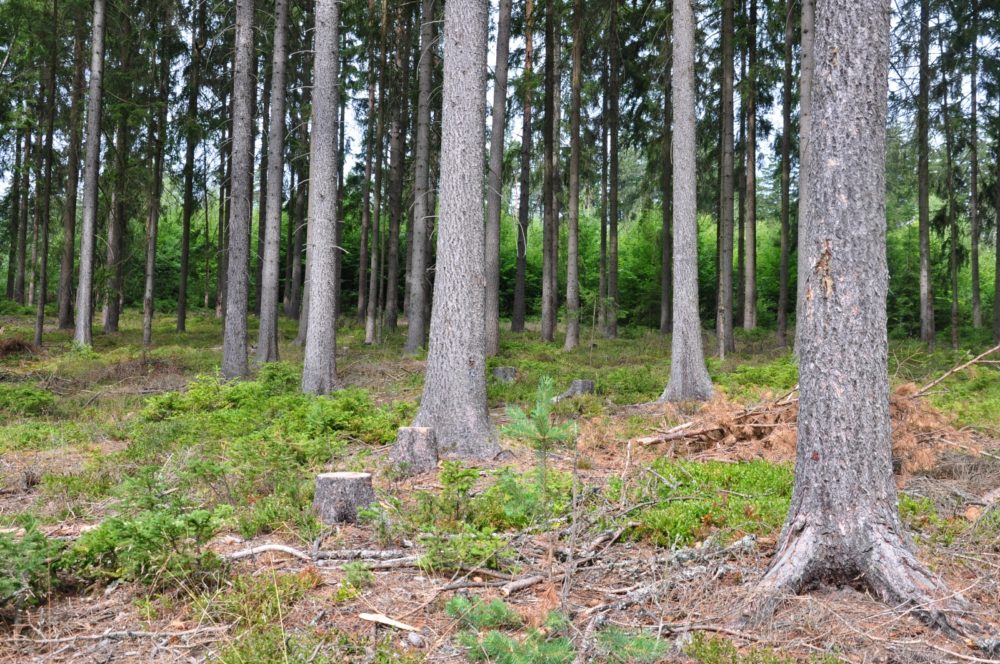 It is important to differentiate between “old growth forests,” which have developed over a long period without human intervention and are diverse ecosystems in terms of species and age composition, and monoculture stands over 120 years old. These forest stands usually have reduced vitality and pose a risk for the potential occurrence of harmful agents. “Old growth forests” deserve a high degree of protection, whereas monoculture stands require management to avoid negative impacts. Interestingly, the age of commercial forests has been increasing significantly in the last century. In 1920, forests older than 100 years were present on only 3% of the arable land, whereas now they occupy more than 20%.
It is important to differentiate between “old growth forests,” which have developed over a long period without human intervention and are diverse ecosystems in terms of species and age composition, and monoculture stands over 120 years old. These forest stands usually have reduced vitality and pose a risk for the potential occurrence of harmful agents. “Old growth forests” deserve a high degree of protection, whereas monoculture stands require management to avoid negative impacts. Interestingly, the age of commercial forests has been increasing significantly in the last century. In 1920, forests older than 100 years were present on only 3% of the arable land, whereas now they occupy more than 20%.
Last year, there were reports in the media that the health of forests in the Czech Republic was the second worst in Europe after France. However, this comparison is misleading because it is based on the number of trees with defoliation of 25% or more, without taking into account the individual species. For Norway spruce, which is the most common tree species in our country, defoliation in the range of 25-35% is normal and does not indicate serious health issues. Moreover, the ranking changes frequently, and in the latest data from 2022, we have been surpassed by other countries like Hungary and Luxembourg.
According ICP Forests report, there is stated, that the data should not be used to compare individual countries but rather to evaluate long-term trends. Unfortunately, the long-term trends are not very positive for Europe as a whole. For all of our main tree species, the majority of areas (58-68%) have not shown any significant development trend in recent years. At the same time, the number of areas where the health of the forests is deteriorating exceeds the number of areas where it is improving. This is particularly true for Norway spruce, where deterioration of the health status is documented in 37% of the areas, while only 5% of the areas have shown improvement.
The occurrence of harmful agents
According to NOAA, the year 2023 was the warmest year in recorded history since 1850. The global temperature surpassed the average value for the 20th century by 1.18 °C and the average value of the warmest year 2016 by 0.15 °C. The Czech Republic also experienced its warmest year period since 1961, for which digitized measurement databases exist, with a deviation of +1.4 °C compared to the average from 1991-2020. This increase in temperature has potential to cause harmful effects.
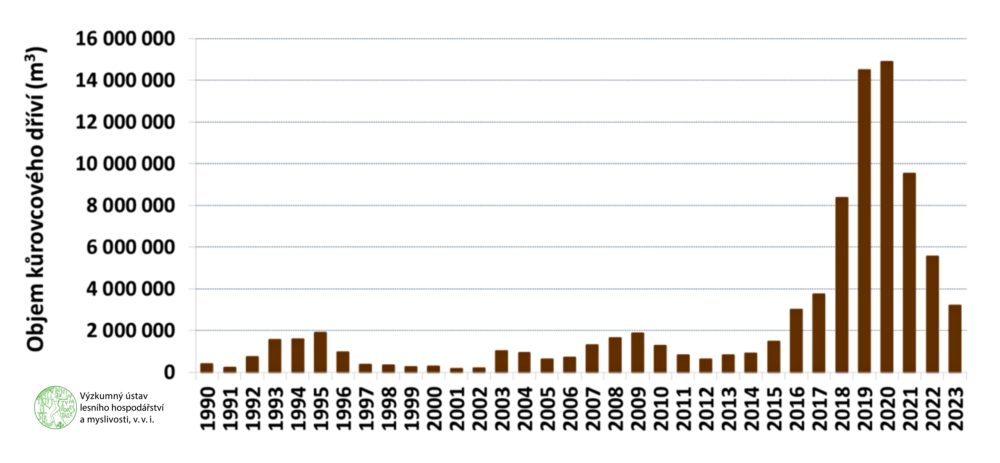 Graph: Development of registered bark wood harvested in the Czech Republic in the years 1990–2023, LOS archive
Graph: Development of registered bark wood harvested in the Czech Republic in the years 1990–2023, LOS archive
The forests in the Czech Republic experienced good health in 2023. The month of April was cooler and more humid than usual, which helped to control the population of insect pests. Even the following months, which were also cooler than usual, contributed to this. Although there were some local droughts during the summer, heavy rains in August helped to improve the situation. Significant drying of the soil only occurred in September and October, when the drought no longer had a significant effect on the forests’ vitality. However, some pine trees in central Bohemia still suffered from drying due to the drought.
According to records, the primary cause of damage in 2023 was the wind, leading to the damage of approximately 1.6 million m3 of wood. Drought was the second biggest cause, leading to damage of around 0.8 million m3, followed by snow and frost, which caused damage to approximately 75 thousand m3 and 21 thousand m3, respectively. Observations also recorded about 20,000 ha of spruce yellowing. Overall, the occurrence of abiotic harmful agents in 2023 can be evaluated as moderate.
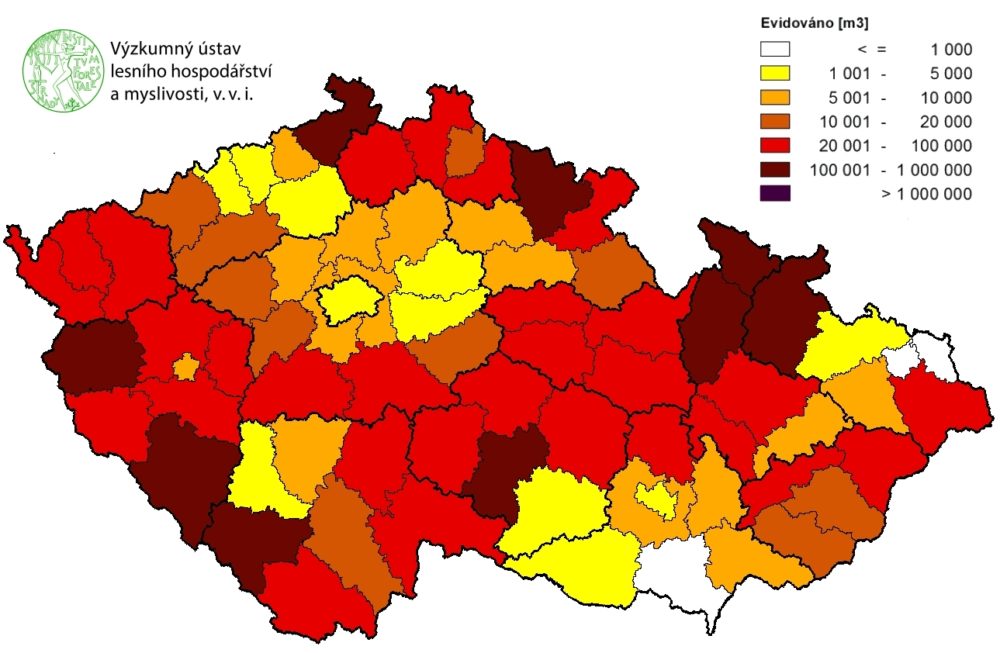 Map: Recorded volume of bark wood harvested in 2023 by districts, LOS archive
Map: Recorded volume of bark wood harvested in 2023 by districts, LOS archive
The long-term overpopulated bark beetles are the primary agents causing harm to the environment. In 2023, approximately 3.2 million m3 of harvested spruce bark wood were recorded, with the highest amount being in the Pilsen Region (around 690 thousand m3), Olomouc Region (around 392 thousand m3), and the Vysočina Region (around 335 thousand m3). While there has been a significant reduction in the extraction of bark beetles compared to 2022, which was the peak of the calamity, the situation is still severe. The warm and dry spring months and growing season could lead to another outbreak of the calamity. The bark base is still very high, especially in some areas of western and northern Bohemia, as well as the Jeseníky Mountains.
Approximately 35,000 m3 of pine wood, 6.5 thousand m3 of larch, 4 thousand m3 of fir, or 3.5 thousand m3 of ash were attacked by bark beetles.
Leaf-eating insects are less significant pests of forest stands in the long term period. In 2023, an area of approximately 1.1 thousand ha was registered for insect damage. The increase in damage is primarily due to adult beetles, which caused damage in an area of approximately 0.6 thousand ha, in connection with the four-year cycle of the “year of the beetle” in south-eastern Moravia. The extent of damage to conifer seedlings by the fat of pine hornworm adults was reported from a total area of approximately 4.9 thousand ha. Additionally, damage caused by small rodents was registered in an area of almost 450 ha.
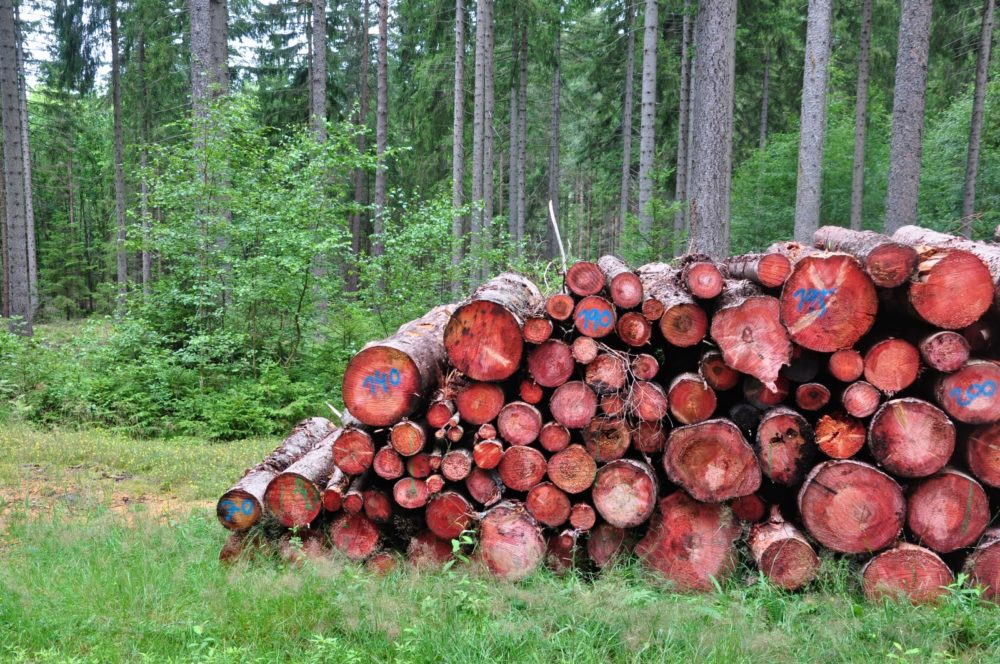 Wood-destroying fungi, particularly the honey fungus Armillaria mellea, are the most significant representatives of fungi that destroy wood. This fungus caused damage to approximately 122,000 m3 of harvested timber in 2023. The situation with ash tree species is also severe. The pathogen Hymenoscyphus pseudoalbidus threatens ash trees, and it is accompanied by root rot agents and the secondary occurrence of bark beetle Hylesinus fraxini. In 2023, this resulted in the recorded harvest of about 44 thousand m3 of ash wood. For the record, pine needle-cast fungus was mostly found in pine forests, covering approximately 1.1 thousand ha. Oak mildew was the most prevalent leaf spot, covering about 0.7 thousand ha. We cannot overlook the surprising phenomenon of young larches dying, especially in Silesia and Moravia.
Wood-destroying fungi, particularly the honey fungus Armillaria mellea, are the most significant representatives of fungi that destroy wood. This fungus caused damage to approximately 122,000 m3 of harvested timber in 2023. The situation with ash tree species is also severe. The pathogen Hymenoscyphus pseudoalbidus threatens ash trees, and it is accompanied by root rot agents and the secondary occurrence of bark beetle Hylesinus fraxini. In 2023, this resulted in the recorded harvest of about 44 thousand m3 of ash wood. For the record, pine needle-cast fungus was mostly found in pine forests, covering approximately 1.1 thousand ha. Oak mildew was the most prevalent leaf spot, covering about 0.7 thousand ha. We cannot overlook the surprising phenomenon of young larches dying, especially in Silesia and Moravia.
The risk of invasive pests is on the rise due to climate change. One of the pests is the pathogen Hymenoscyphus pseudoalbidus. Another invasive species that has been recently recorded is Corythucha arcuata. In 2023, it was spotted in the vicinity of Lanžhot for the first time.
